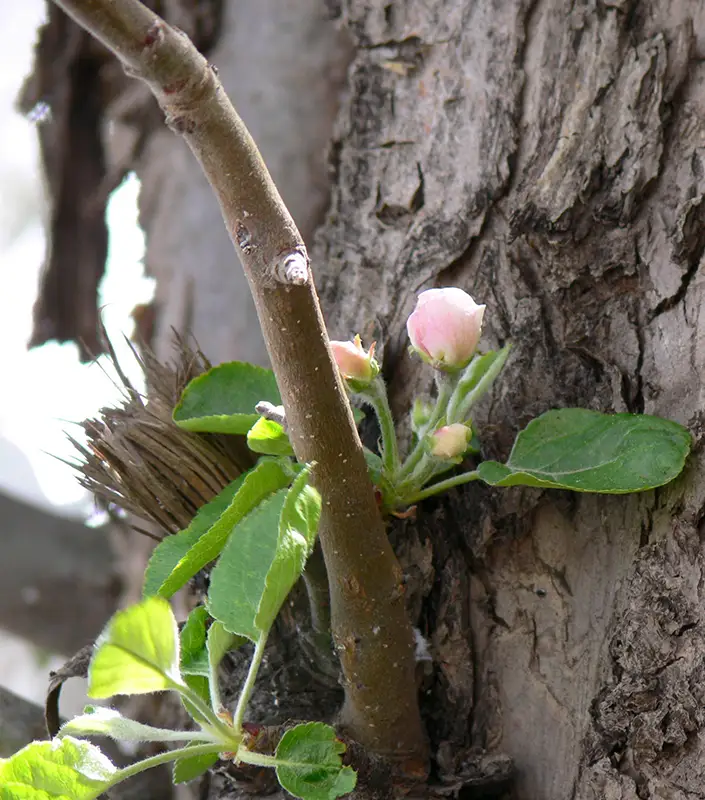Best Tree Grafting Tools To Buy Online
If you’re looking for a way to plant trees but don’t have the equipment or know-how, you’ve come to the right place. Grafting can be tricky, and certain tools can make the process easier and more enjoyable. Here’s what you need to know about grafting and which tools can help you.
What Is Tree Grafting?
Tree grafting is a technique used to propagate trees. It involves the transfer of one tree’s roots to another tree of the same species or a different species. The process involves cutting into one tree’s trunk and inserting another tree’s roots into the cut. This can be done by hand or with machines.
Grafting aims to create a stronger connection between two trees. Trees can be grown from cuttings taken from one tree and planted in an existing grove, or they can be grown in pots before being implanted into the ground. Grafting is also used to produce fruit trees that bear well-formed fruits with high yields and little susceptibility to diseases.

Which Are the Important Tools Needed to Graft Trees?
There are many tools that you need to graft trees. Knowing what type of grafting tool is best for your needs will help ensure success on the job site. Listed below are some of the tools needed when grafting trees.
Grafting Knife
A grafting knife is used for cutting branches from a tree and joining them together so that they can form a new tree. Grafting knives come in many varieties and styles, but they all serve the same purpose of developing a connection between trees. This connection can be used to strengthen the branches, reduce disease, and increase the height of a tree. The first use of grafting was done by the ancient Egyptians, who used their knowledge of plant life to help them create better crops. Grafting took off when Europeans discovered this process during their travels worldwide.
Grafting Wax
Grafting wax can be used to graft any type of tree, from conifers to deciduous trees. It is a polyester-based compound that is useful for grafting trees. The polyester content in the wax ensures that it retains its flexibility and keeps its shape after application. Unlike incision wrap or polyethylene terephthalate (PET) tape, grafted branches do not need to be cut off. Grafting wax comes in different types and grades depending on the application and tree graft.
Grafting Tape (Biodegradable)
Grafting tape is used to cover the tree wound and prevent water from going into it. The tape should be placed over the area at least 3-4 times, ensuring it sticks firmly on all sides.
Best Tree Grafting Tools
Choosing the best grafting tools for trees can be a challenge. There are so many options out there, and each has its merits. Knowing what you need to find the right grafting tool for your specific needs is essential.
The first step is knowing what kind of grafting you will do. A simple clamp will be fine if it’s a small graft, like a tree branch or shrub. You may have to buy special equipment for an ornamental tree or a large shrub. The second step is figuring out what kind of tree you want to graft on top of. This will usually determine which size grafting tool you need and what type of wood you need for your graft material. Once these things are figured out, it’s time to go shopping!
FUNTECK 2-in-1 Grafting Tools
The Funteck 2-in-1 grafting tool is a pruner kit and grafting knife. It has a straight blade on one side, which can be used to cut through the bark of a tree, and on the other side is a curved blade that can be used to carve out holes for grafting. This tool is designed to make it easier for you to perform grafting on your own trees.
ZLiT Grafting Tools Kit
The ZLiT grafting kit is an essential tool for any tree surgeon. With a unique design and various implements, this kit is perfect for any job. The kit has many tools, including a grafting knife, a wrench, a screwdriver, replacement grafting blades, transparent tapes, grafting clamps, and a storage bag. This kit makes girdling easy, and you don’t have to worry about pulling out your tools when needed – they’re all in one place! The kit is easy to use; just follow the instructions, and you’ll be fine.
Why Do People Graft Fruit Trees?
There are a lot of reasons to graft fruit trees. First, it’s a great way to get new varieties of fruits or berries without starting from scratch. You can graft onto existing fruit trees and then let them grow in your garden, or you can start with a rootstock that’s already been grafted and use that rootstock so that you don’t have to replant the tree.
Second, grafting allows you to add new growths of desirable plants to an existing tree. This is especially helpful when you’re trying to grow your garden as an organic matter. You might be able to take some sprouts from one plant and graft them onto another plant that would otherwise have no way of growing any fruit at all!
Finally, grafting allows you to choose different styles of fruit trees based on the look or taste you want. Some people like apples with more red color, while others prefer oranges with less orange color. Grafting gives you control over what kind of tree grows out of your original rootstock so that you can get exactly what type of tree suits your tastes best!
How Does Grafting Work?
Tree grafting is a process by which you take the stem or roots of a tree and attach them to another healthy tree. This can be done to improve your own trees’ health or to help boost the health of another tree you want to grow.
The way it works is pretty simple: First, you need access to healthy trees that are at least three years old. Then, you cut off the top part of one of these trees and place it in a container filled with soil. You then carefully slice off an inch or two from the bottom part of this healthy tree and place it into the hole in your other, older tree’s root system. Finally, you cover everything with plastic wrap until it’s time for it to heal. It takes anywhere from six months to two years for this process to complete. However, once it does, your new tree will be stronger than ever!
What Are the Steps for Tree Grafting?
- Carefully clean the area around the tree, removing any dead branches or other debris that may be present.
- Remove all of the leaves from around the base of the tree, and make sure to remove any small twigs or needles that may have fallen off during the winter months.
- Cut a small piece of bark from the tree and place it on top of a small piece of paper towel or toilet paper (this will help prevent bacteria from getting into your cut).
- Place a grafting knife into the cut, ensuring not to damage any underlying tissue as you push it through.
- Grafting is complete when you can see both ends of the graft with your naked eye!
Can All Types of Trees Be Grafted Together?
Yes, all types of trees can be grafted together. However, there are some things to consider. First, the tree species must be compatible for the grafting process to succeed. For example, if you are trying to graft a pine tree onto an apple tree, the two will not graft because they are not compatible species.
Second, it is vital that the scion and rootstock match in size and vigor level. If they do not match, it will cause problems with growth. Thirdly, if you have a very small branch on your tree that you would like to graft onto another branch of your tree, make sure that there is enough space between them so that they can grow together naturally without causing harm or stress to either plant (like pulling one too tightly).
Conclusion
The grafting process requires a bit of care and attention, but with the proper tools and information, you can successfully graft your tree and make sure that it grows as quickly and healthily as possible. One of the most important things to consider is that grafting only works on healthy trees, so ensure that you give your trees proper care before attempting to graft them. If you don’t want to do it yourself, or if this would be too difficult for you, there are plenty of professional arborists out there who can help you.









